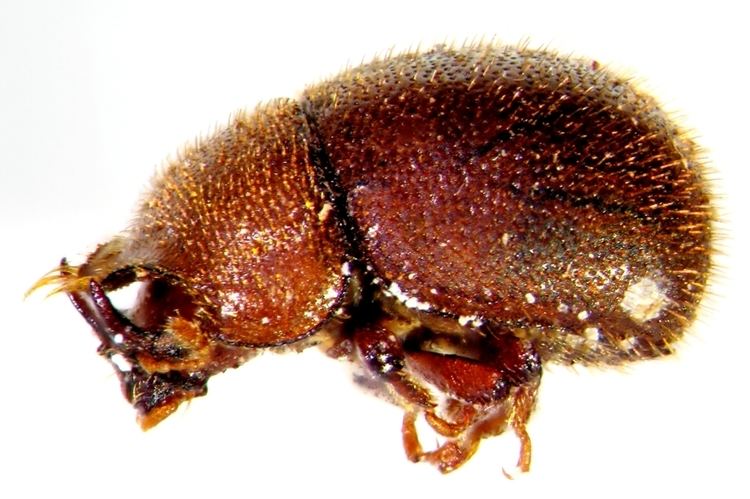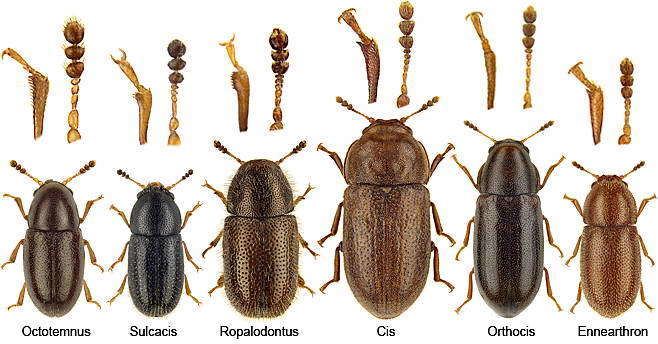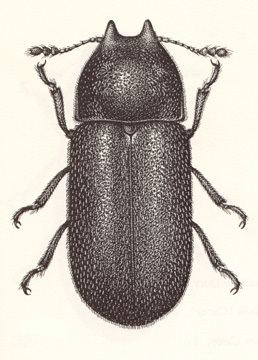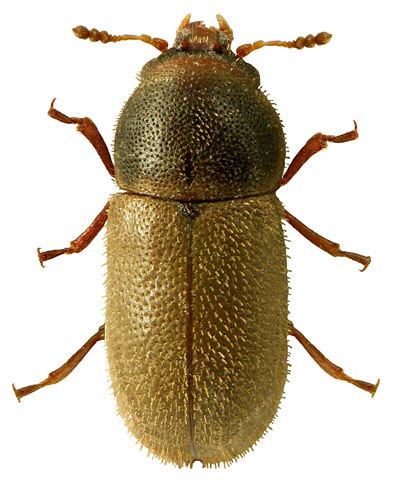Order Coleoptera Scientific name Ciidae Rank Family | Higher classification Tenebrionoidea | |
 | ||
Similar Beetle, Mycetophagidae, Cerylonidae, Salpingidae, Aderidae | ||
The minute tree-fungus beetles, family Ciidae, are a sizeable group of beetles which inhabit Polyporales bracket fungi or coarse woody debris. Most numerous in warmer regions, they are nonetheless widespread and a considerable number of species occur as far polewards as Scandinavia for example.
Contents

Description

As their name implies, minute tree-fungus beetles are tiny, about 0.5 to 5 mm long. Their body is short and cylindrical, often convex, sometimes with a smooth coat of fine short hairs, sometimes being covered in long bristly hairs. They are mostly dark brown or blackish. The short antennae consist of 8–10 segments. The pronotum is wider than long and often forming a quite prominent helmet-like structure. The elytra do not taper noticeably over most of their length. The legs are short, the tibiae of the forelegs often bear characteristic extensions at the ends.
Ecology

These beetles usually inhabit Polyporaceae or more rarely Corticiaceae bracket fungi. The larvae as well as the adults burrow inside the fungi, often choosing old specimens or old tissue. The whole development, from egg to adult, often takes as little as two months; some are parthenogenetic. A few species are pests of commercial fungi, as in the case of Cis chinensis, which infests dried fruiting-bodies of Ganoderma lucidum.
At least one ciid, Falsocis brasiliensis, is a threatened species. It occurs only in small forest remnants of the Northeast and Southeast Regions of Brazil.

Minute tree-fungus beetles are food for many predatory insects, like rove beetles (Staphylinidae), checkered beetles (Cleridae) and parasitoid wasp larvae.
List of genera

